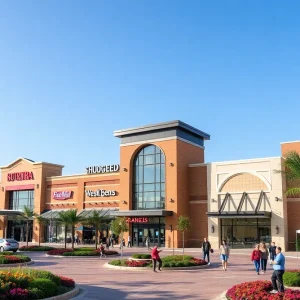Dam Removal Marks New Era for Klamath River Restoration
PHOENIX — Last week, a significant environmental milestone occurred when the final dam on the Klamath River, located at the California-Oregon border, was taken down. This event marks a victory for tribes and environmentalists who have spent decades working to heal the river’s ecosystem, which had suffered dearly due to the dams.
A Journey from Tragedy to Triumph
Brook Thompson, now 28, recalls a devastating experience from her childhood. When she was just seven years old, a massive fish kill in 2002 shocked her community and had a profound impact on her life. “It was devastating seeing thousands of dead bodies the same size as me in the river,” Thompson, a member of the Yurok Tribe, reflected. This tragic event ignited a fire in her and many other tribal members, leading them on a two-decade-long fight to save the Klamath River.
History of the Dams
The removal of the dams was essential because they blocked the river’s natural flow, creating conditions that led to a significant algae bloom, which resulted in the fish die-off in 2002. On Tuesday, the last coffer dams were breached, allowing the Klamath River to flow freely again, restoring nearly 400 miles of essential salmon habitats. Many tribal members and environmental advocates watched joyfully as the waters reclaimed their historic route.
Understanding the Impact
For over 100 years, the river faced severe mismanagement, especially affecting tribal lands belonging to the Shasta Nation. Dams were constructed on these ancestral lands, and agriculture practices modified the river’s natural shape, dramatically affecting water quality and fish populations. Salmon, which are vital to the cultural and nutritional lifestyle of various tribes, saw their numbers drop catastrophically, shrinking by about 95%. This was a blow not only to the ecosystem but to the tribal communities reliant on these fish.
Tribal communities, including the Yurok, Hupa, Karuk, and Klamath, have long centered their lives around the salmon runs that once thrived in the river. The loss of these fish has had serious consequences, with increased rates of depression, suicide, and health issues becoming prevalent among tribal members deprived of their traditional ways of life. Thompson mentions that many of her friends didn’t make it past 30 years old, demonstrating the essential connection between the health of the river and the people it sustains.
Pushing for Change
Jeff Mitchell, a Klamath Tribes member with over 50 years of experience serving his tribe, emphasized the dire situation. “The dams completely wiped out our fisheries and ruined the water quality,” he said. He pointed to government actions that led to increased phosphorus in the water—which contributed to the harmful algae blooms—as a major factor in the ecological disaster.
The 2002 fish kill, which claimed the lives of around 70,000 salmon, served as a rallying cry for tribes and environmentalists alike. The campaign called “Undam the Klamath” united these groups in their quest to restore salmon populations and heal the river. Over the years, they protested at various legislative and corporate locations, advocating for systemic changes.
A Bright Future Ahead
In November 2023, the Federal Energy Regulatory Commission finally approved the removal of the four lower dams on the Klamath River, initiating a new chapter in river restoration. Two upstream dams, now equipped with fish ladders, will continue to allow some fish passage. With the denouement of the last coffer dams, an unbroken path is now open for salmon and other migrating fish to access Upper Klamath Lake and further tributaries.
The entire deconstruction project, including the removal of additional riverside infrastructure, is expected to wrap up by late September. Efforts like Resource Environmental Solutions are focused on restoring land and creek beds, seeking to mend the river from years of neglect and contamination.
A Community Inspired
Thompson heralded this development as a source of hope for younger tribal members. “They’re able to see the tribe has made progress, and they see they can be part of solutions,” she expressed. Meanwhile, the Shasta Indian Nation is also preparing to restore 2,800 acres of land that were covered by the reservoirs created by the dams, signaling further advancement in the region’s healing.
Despite celebratory moments, Mitchell stresses that ongoing work is necessary to ensure the salmon and other migratory fish populations regain their rightful role in the diet and culture of the Klamath Tribes. “We’ve got to make sure the fish have a real home,” he explained, emphasizing the deep interconnectedness of the river, its fish, and the people who have thrived along its banks for generations.








